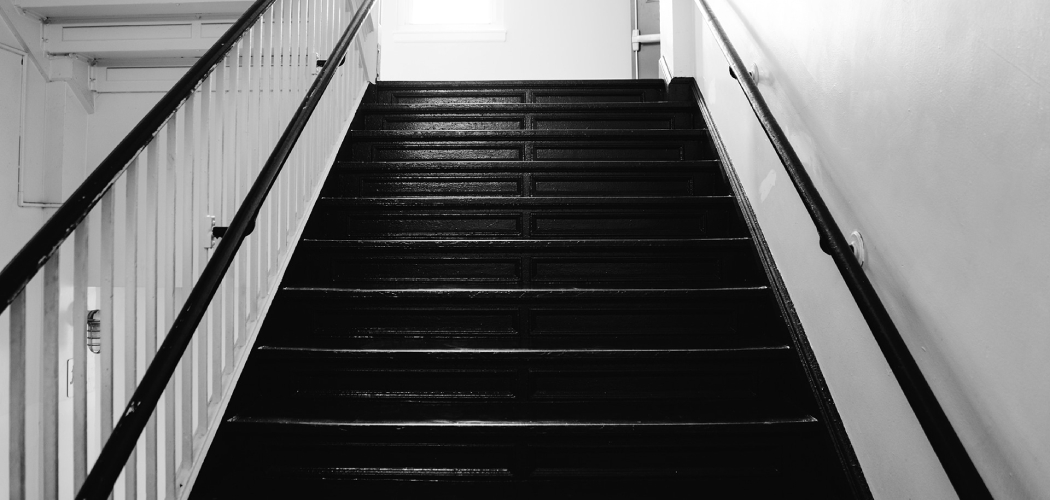Floor transitioning has become a popular trend in the world of interior design. For instance, when two different flooring materials come together at the top of a stairwell, you must make a seamless transition.
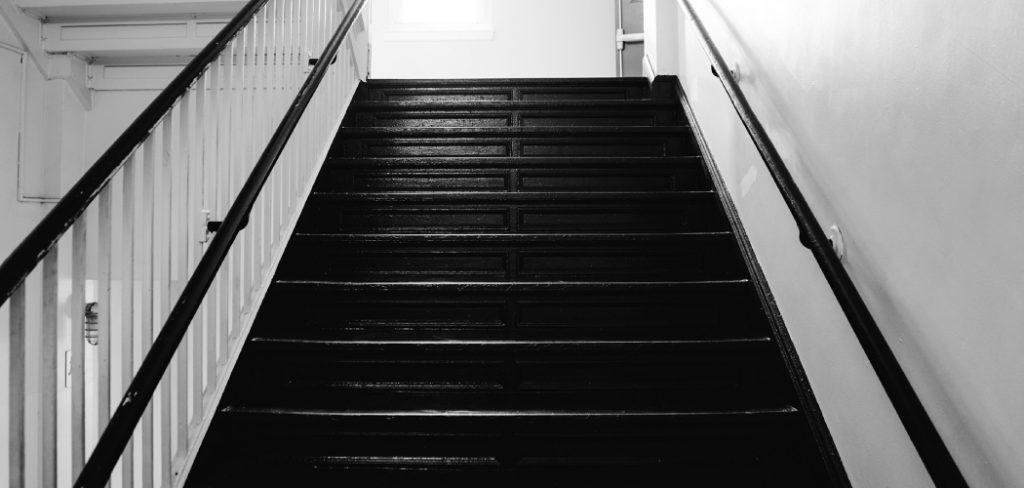
Otherwise, it can be a potential trip hazard. In this blog post, we will discuss how to transition flooring at top of stairs and the essential steps to ensure the job is done correctly.
Can You Transition the Flooring at The Top of The Stairs?
Making transitions in your home can be a daunting task, especially regarding flooring. One area that may make you stop and wonder is the top of your stairs. Can you transition the flooring here? The answer is yes! It’s important to consider not just the appearance but also the safety and durability of your chosen materials.
With the right type of transition piece, you can achieve a seamless transition between different types of flooring. Whether you prefer hardwood, tile, or carpet, you can make the change at the top of your stairs without sacrificing style or functionality. So go ahead, and tackle that flooring project with confidence!
Why Should You Transition Flooring at The Top of The Stairs?
Transitioning flooring at the top of the stairs is an often overlooked step in home renovation. When considering the design of your living space, the top of the stairs may seem like a small detail, but it can make a huge difference in the overall aesthetic. The transition of flooring not only creates a visual separation between two rooms and provides a safety measure.
Changing from a hard material, such as ceramic tile, to a softer one, such as carpet, can help prevent accidents from slips and falls. Additionally, choosing a contrasting color or texture for the stair landing can create a unique focal point in your home. So if you’re considering upgrading your home, don’t forget about the transition at the top of the stairs.
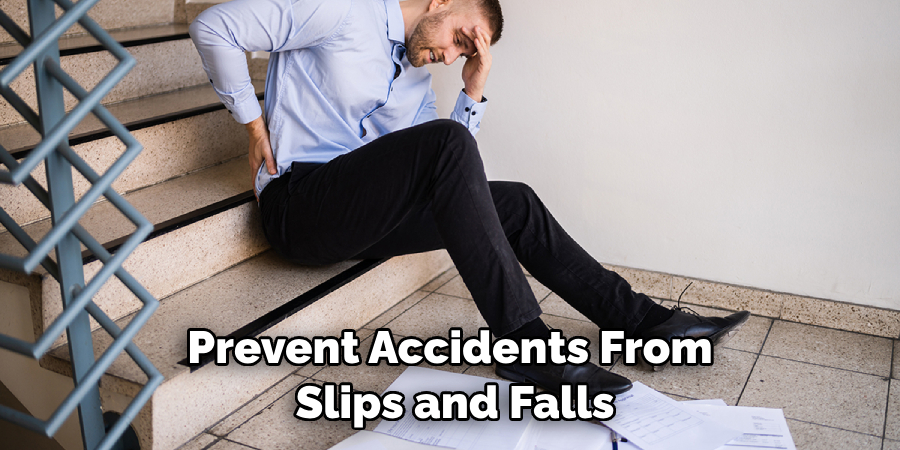
A Comprehensive Guide on How to Transition Flooring at Top of Stairs
1. Choose The Right Flooring Material
The first step is selecting the right flooring material to use, as this will determine the design and overall look of the transition. The best flooring types for stairway transition are hardwood, laminate, and tiles. Hardwood and laminate are ideal options because they blend well, are durable, and don’t shift easily. Tiles are also great for transition, especially if you have an intricate design that you want to showcase.
2. Plan The Transition
Planning is crucial when it comes to flooring transitions. So, before you start the installation, you should take the time to measure the space at the top of the stairs. This will help you determine the materials you need for the project. The planning stage ensures that you don’t buy too little or too much and that the installation process flows smoothly.
3. Prepare The Flooring Surface
The surface of the top of the stairs needs to be prepped before the transition. You must ensure the flooring is clean, level, and smooth. Any debris and dirt should be removed, and if necessary, a self-leveling compound should be applied to smooth out any unevenness.
4. Determine The Transition Type
Once you have chosen your flooring and prepped the surface, the next step is determining the transition type you’ll use. Flush, overlap, and stair nose are the three most popular transition types.
A flush transition is best suited for hardwood, whereby the flooring is sanded down to meet the level of the subfloor. Overlap is ideal for laminate flooring where the former material is laid over the latter. A stair nose is the most common type if transitioning from carpet to hardwood or laminate.
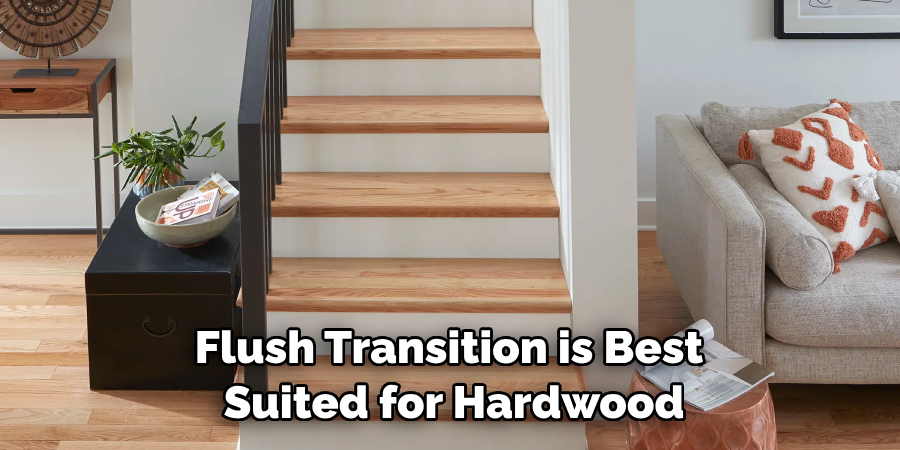
5. Install The Flooring Transition
The next step is installing the transition. Depending on your preference, you can choose to use adhesive, glue, nails, or screws. When installing, it is important to ensure the transition is level and flush with the flooring on both sides. Ensure that you apply enough adhesive to secure the transition firmly in place. A properly-installed transition will last a long time without any risk of chipping or dents.
6. Trim The Excess Material
Once the transition is in place, you must trim the excess material. This can be done with a saw or jigsaw, giving your hardwood flooring a neat finish. Ensure you measure carefully so you don’t cut off too much of the flooring.
7. Add Finishing Touches
Once the excess material has been trimmed, add finishing touches to ensure the flooring looks perfect. You may want to add a trim piece or use caulk sealant to hide gaps between the transition and the flooring. Finally, apply a coat of polyurethane finish for added protection and shine.
That’s it! You’ve now learned how to transition flooring at top of stairs. These steps will ensure a professional-looking finish and a durable, long-lasting installation. Good luck!
5 Considerations Things When You Need to Transition Flooring at the Top of Stairs
1. The Type of Flooring You Have Currently
If you have hardwood floors, you’ll want to ensure that the new flooring you choose will match in terms of color and style. If you have carpet, you’ll want to ensure the new flooring is compatible with carpet installation.
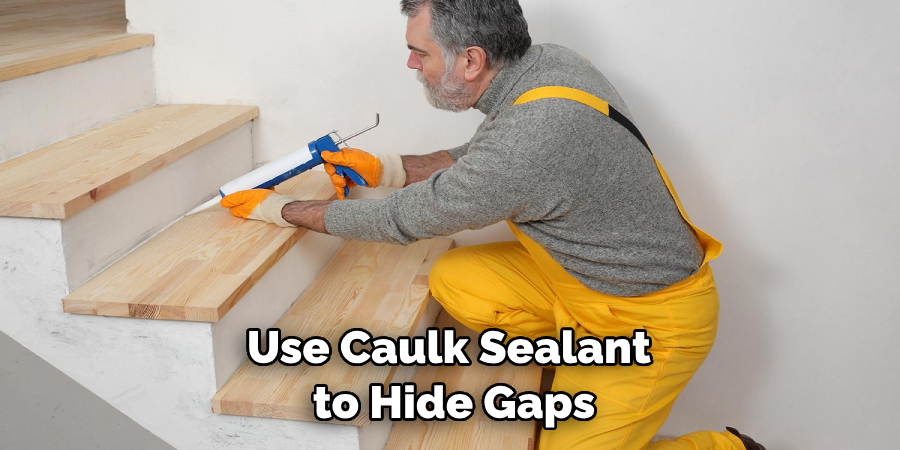
2. The Type of Stairs You Have
The type of stairs you have will dictate what kind of flooring can be installed. For example, if you have winder stairs, you must ensure the new flooring can be installed without damaging the existing staircase.
3. The Height of The Stairs
The height of your stairs will impact the amount of work required to install the new flooring. If your stairs are taller than average, you may need to hire a professional to install the new flooring.
4. The Width of The Stairs
The width of your stairs will also impact the amount of work required to install the new flooring. If your stairs are wider than average, you may need to purchase more materials to complete the project.
5. Your Budget
Your budget will ultimately dictate what kind of new flooring you can afford to install. If you’re working with a limited budget, you may need to choose a less expensive option such as laminate or vinyl instead of hardwood or stone.
5 Benefits of Transition Flooring at the Top of Stairs
1. Safety
One of the primary benefits of transition flooring at the top of stairs is safety. Slips and falls are a leading cause of injuries, and stairs are one of the most common places where people fall. By installing transition flooring, you can help to reduce the risk of slips and falls and keep your family safe.
2. Prevention of Damage
Another benefit of transition flooring is that it can help to prevent damage to your floors. When people walk up and down stairs, they can scuff or scratch the floors with their shoes. Transition flooring can help to protect your floors from damage and keep them looking new for longer.
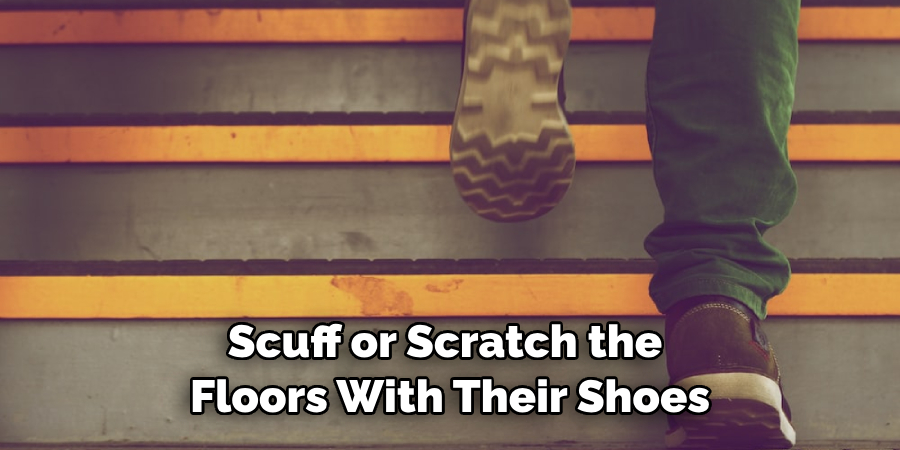
3. Improved Aesthetics
In addition to safety and protection, transition flooring can also improve the aesthetics of your home. If you have a beautiful hardwood floor, for example, installing transition flooring at the top of the stairs can help to create a seamless look between the two floors. This can give your home a more polished and put-together look.
4. Increased Value
Transition flooring can also add value to your home if you ever sell it. Buyers will be impressed by the safety and protection that transition flooring provides, which can help increase your home’s value. Transition flooring is a great investment if you are considering selling your home.
5. Easy Installation
Another great benefit of transition flooring is that it is easy to install. You won’t need to hire a professional or do any complex DIY projects – follow the instructions that come with your transition flooring kit, and you’ll be able to install it in no time.
6 Common Mistakes People Make When Trying to Transition Flooring at the Top of Stairs
1. Not Measuring the Stairs
One of the most common mistakes people make when trying to transition flooring at the top of stairs is not measuring the stairs. It is important to take accurate measurements of the width and length of the stairs to ensure that the new flooring will fit properly.
2. Not Planning for a Transition
Another mistake people often make is not planning for a transition. A transition is necessary when changing from one type of flooring to another, such as from hardwood to carpet. Without a transition, there will be a visible line where the two different types of flooring meet, which can be unsightly.
3. Not Cutting the Flooring Correctly
Another common mistake people make when installing new flooring at the top of stairs is not cutting the flooring correctly. It is important to ensure the cuts are straight and even to avoid gaps or unevenness.
4. Not Installing the Flooring Properly
Another mistake that people often make is not installing the flooring properly. This can result in gaps or uneven flooring, which can be unsightly and dangerous. It is important to follow all instructions carefully to avoid problems during installation.
5. Not Maintaining the Flooring Properly
Once the new flooring has been installed, it is important to maintain it properly to keep it looking its best. This includes sweeping or vacuuming regularly to remove dirt and debris and avoiding scratching or scuffing the surface of the flooring.

6. Not Taking Professional Advice
Finally, seeking professional advice is important if you are having difficulty transitioning flooring at the top of stairs. An experienced contractor can advise you on what type of flooring best suits your needs and how to install it properly. They can also provide tips on maintenance and repair in case any issues arise.
By following these tips, you can ensure that your transition flooring at the top of stairs is successful and looks great for years. This will keep your home safe from slips and falls and maximize the value of your investment in new flooring.
Is It Possible to Transition Between Hardwood and Tile Floors at The Top of the Stairs?
The design of a home can impact its overall aesthetic and function. The transition between hardwood and tile floors is an important aspect of interior design, especially if you have stairs in your home. Many homeowners wonder if it is possible to transition between hardwood and tile floors at the top of the stairs. The answer is yes, it is possible.
However, attention to detail and precision are key when making this transition. Proper installation, materials, and measurements must be considered to ensure a seamless and elegant transition that enhances the beauty and functionality of your home.
Conclusion
Floor transition at the top of stairs doesn’t have to be stressful. You can achieve a seamless, level, and aesthetically pleasing transition by following the above steps. Like any DIY project, planning and the right tools for the job are the most important.
If you have any doubts, seeking professional help is always advisable. Remember, a well-done transition is safe and adds aesthetic value to your home. Thanks for reading our post about how to transition flooring at top of stairs.
